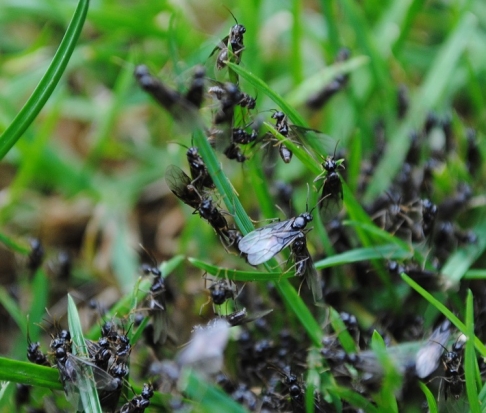News archive
Scientists say flying ant day is 'definitely a myth', as public reveal surprise findings
- Details
- 26 October 2016
The notion of one annual ‘flying ant day’, when swarms of ants emerge in mass mating flights all over the UK, is a ‘myth’, scientists from the Royal Society of Biology and the University of Gloucestershire say.
Now in its fifth year, the flying ant survey harnesses people’s natural fascination with the phenomenon, asking them to share photos and information about sightings, in order to track the pattern of flying ant activity across the UK.
Professor Adam Hart FRSB, from the University of Gloucestershire said:
“Many people tend to think that there is one national flying ant day, and the media are keen to report it, but our research has shown that’s absolutely not the case. As in previous years we have seen many ‘flying ant days’ across the country this summer.”
“However, summer 2016 did see plenty of very coordinated flights in early August, with reports from Glasgow, Liverpool, Cornwall, Kent and even the Netherlands coming in on one day alone.”
 A huge number of flying ants suddenly appear when young queens and males leave the nest. Queens can live for over 10 years and spend most of their lives in their nest. New queens, however, will leave to mate and found a colony of their own. This ‘nuptial flight’ is why ants fly.
A huge number of flying ants suddenly appear when young queens and males leave the nest. Queens can live for over 10 years and spend most of their lives in their nest. New queens, however, will leave to mate and found a colony of their own. This ‘nuptial flight’ is why ants fly.
Upon losing their wings only a few days later, reproductive queens set up a new nest and start an empire of their own. Unfortunately the male counterparts die soon after their duties are completed.
This year the Royal Society of Biology created an infographic video of sightings from across the UK. Watch this year’s ant flight sightings and find out more about the phenomenon.
The Royal Society of Biology and the University of Gloucestershire would like to thank everyone who engaged with the flying ant survey.

